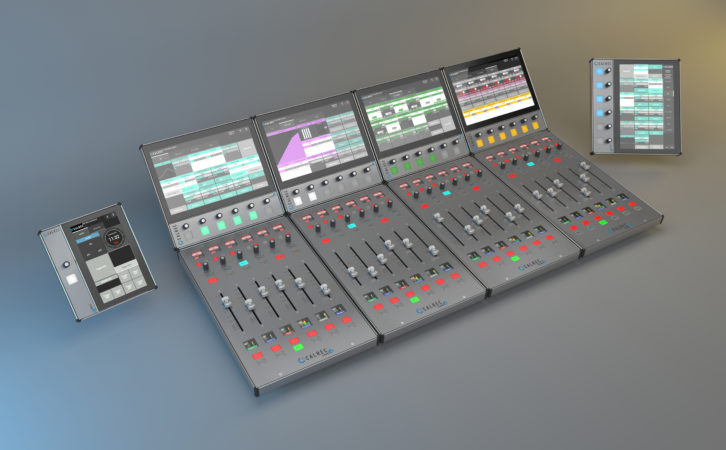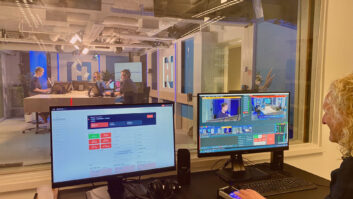Radio World’s Buyer’s Guide section this month focuses on consoles and mixers.
Calrec Audio, which formed as a mic manufacturer in 1964, now makes a range of audio broadcast equipment. Its products are designed, manufactured and tested at its headquarters in West Yorkshire, England, and the company has an office in California offering sales, support and logistics.

Henry Goodman is director of product management.
Radio World: What would you say is the most important trend in the design and manufacture of radio consoles?
Henry Goodman: The flexibility to distribute productions across multiple locations both in terms of equipment and people is driving new technological and workflow approaches. The ability to control your audio console either remotely from a tailored IU or worksurface is key to these developing remote applications.
For the Calrec Type R for Radio, working natively within an IP environment is a key enabler for this style of distributed production. The modularity of the Type R for Radio surface panels together with the ability to customize the functionality presented on the soft panels makes it easy for users to tailor their specific remote needs and desires.
RW: Is Type R for Radio your flagship model for radio applications?
Goodman: Yes, and recently we added a compact Talent Panel to it, which allows users to switch between multiple sources via its integrated, hi-res TFT and adjust headphone volume with a dedicated rotary control. Four switches mean the panel can be customized to the individual user with common functions like talkback and cough switches; this ensures only essential controls are close to hand. We’ve also added a new GPIO unit 1U box for Type R which delivers an additional 32 GPOs and 32 GPIs for interfacing with external systems such as playout, phone systems, codecs and more.
RW: Can you give examples of client applications?
Goodman: South African community radio station Radio Rosestad 100.6 FM in Bloemfontein is using a six-fader Type R for Radio console with one large soft panel (LSP), plus a small soft panel (SSP) for exclusive use by guests. Also in South Africa is internet radio station Vibez.Live, which uses a six-fader Type R for Radio with dual layer functionality for extra faders with a simple button touch. The station also added a large soft panel (LSP) with feature sets pre-loaded for more control.

[Read More Buyers Guide Reviews Here
RW: How has the surge in the demand for remote audio workflows affected you?
Goodman: With the rise of remote working and remote production, we felt it necessary to expand our recently launched Sound Institute with the rollout of an audio over IP training course. The AoIP course provides a comprehensive understanding of AoIP from basic to advanced practices and it dovetails with us taking the lead in AoIP product development and deployment with Type R and ImPulse.
RW: What else should we know?
Goodman: As mentioned, we’ve been busy adding new features to Type R for Radio, including the Talent Panel that connects directly to the console AoIP network allowing a user to monitor selected sources as well as providing Talkback and Cough facilities. The new GPIO unit extends physical GPIO connectivity. Within a single Type R for Radio core, we have enabled the ability to run up to three independent audio mixers, each with its own dedicated mixing, routing and monitoring engines. Type R for Radio core hardware redundancy is now also offered with an optional secondary mirrored core providing full system core hardware failover redundancy in addition to network redundancy.










